Crete or Cyprus: Which One to Choose for summer vacation?
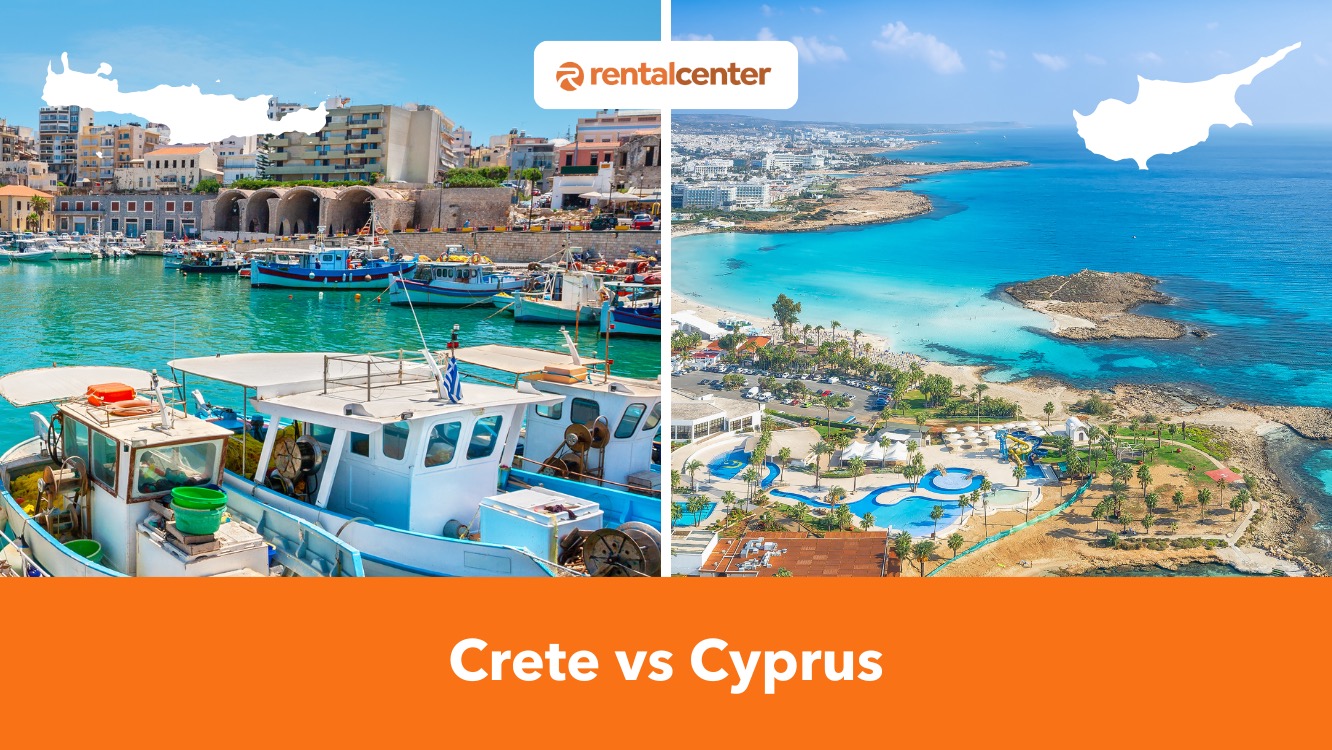
Travellers who plan to travel to the two islands, Crete and Cyprus, definitely choose either of the two because both provide unique and varied locations for special events. Some people have questions in mind about Cyprus or Crete. Crete is the largest of the Greek islands and is recognised for its amazing location, making it a popular wedding and honeymoon destination. There are historic sites to visit, lovely beaches to relax on, and traditional cuisine to sample. Cyprus is a beautiful Mediterranean island and a popular destination for weddings because of its charming landscapes and dynamic culture.
The Island of Cyprus accommodates cultural events, wellness retreats, and family reunions due to its quiet villages and spa resorts. The two islands provide remarkable surroundings for a variety of important occasions, activities, and experiences. They provide a wide range of interests, ensuring that the occasion is unforgettable.
Crete offers ancient ruins like the Palace of Knossos, beautiful beaches, stunning gorges, and Mediterranean cuisine. Crete’s diverse activities make it ideal for a well-rounded vacation.
Cyprus features ancient sites like the Kourion Archaeological Site, pristine beaches, and Cypriot cuisine. Picturesque towns such as Paphos and Larnaca, water sports, local festivals, and natural wonders like the Akamas Peninsula and Troodos Mountains enhance its appeal. It offers historical and natural attractions for diverse interests.
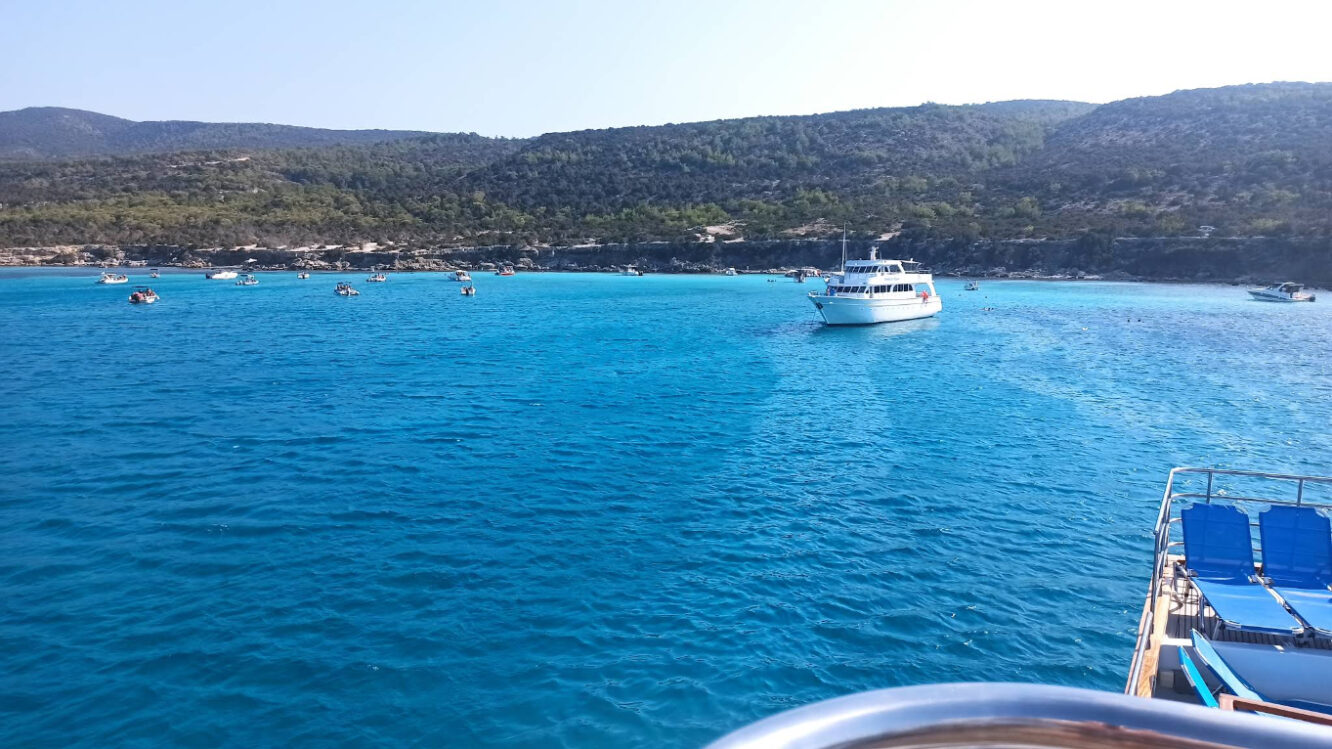
The Republic of Cyprus is 2440 square kilometres smaller than Crete. Crete is 8,450 square kilometres (3,260,00 miles), while Cyprus is 5,896 square kilometres (2,276,00 miles). The size difference is reflected in the array of scenery, attractions, and activities accessible on each island, with Crete providing more possibilities because of its bigger size. Crete’s population is lesser compared to Cyprus.
Cyprus is 29.27% smaller than Crete. Cyprus covers 5,896 square kilometers (2,276 square miles), while Crete spans 8,312 square kilometers (3,209 square miles). Cyprus has 875,000 people, whereas Crete has 624,408 residents, making Cyprus 40.141% more populous than Crete.
What Special Occasions are Best to Celebrate in Crete or Cyprus?
The special occasions to celebrate in Crete or Cyprus involve weddings, honeymoon anniversaries, bachelor or bachelorette parties, and family reunions. The largest of the Greek islands, Crete, and the charming Mediterranean island of Cyprus both provide the perfect venues for a range of unique events and celebrations. Crete is a flexible destination that accommodates a variety of unique events and celebrations. Crete’s scenic landscapes, charming villages, and beautiful beaches make it a perfect place for weddings. Couples exchange vows in front of a Venetian harbour in Chania, a pink sand beach in Elafonissi, or one of the island’s historic monasteries.
Crete is perfect for honeymooners seeking a balance of relaxation and excitement, due to its romantic surroundings, hidden beaches, and intimate villages. Couples discover ancient ruins, stroll through stunning canyons, and dine by candlelight in tiny tavernas. Celebrating an anniversary in Crete allows couples to rekindle their romance in the middle of the island’s natural beauty. A magnificent beachfront resort is the perfect place to unwind, take a sunset cruise down the coast, or indulge in local wine tasting.
Families wishing to get together for reunions are catered to by the array of activities and lodging options available in Crete. There are options to fit party sizes and preferences, ranging from coastal villas to traditional mountain residences. The rich history and culture of the island provide several chances for connection and discovery.
Cyprus provides a unique atmosphere for special occasions with its rich history, breathtaking coastlines, and dynamic culture. Cyprus is recognised for its lovely wedding locations which range from beachside resorts to ancient cathedrals and monasteries. The warm climate and gorgeous environs of the island make it a popular choice for couples looking for a Mediterranean wedding experience.
Cyprus offers a nightlife culture, especially in places, such as Ayia Napa and Limassol, making it a great destination for pre-wedding festivities. Taking pleasure in nightclub adventures, boat cruises, and beach parties.
What can you Do in Crete?
There are a lot of things that you can do in Crete, such as exploring the ruins and other towns, enjoying the beaches, and tasting wine and local cuisine. Crete’s numerous attractions and recreational opportunities attract those interested in history, nature lovers, foodies, and adventure seekers. It makes a great destination for a complete and unforgettable trip. Explore historic sites including the Palace of Knossos, Phaistos, and Malia while on the island of Crete, which is rich in history. The archaeological sites provide insight into the island’s ancient Minoan civilization.
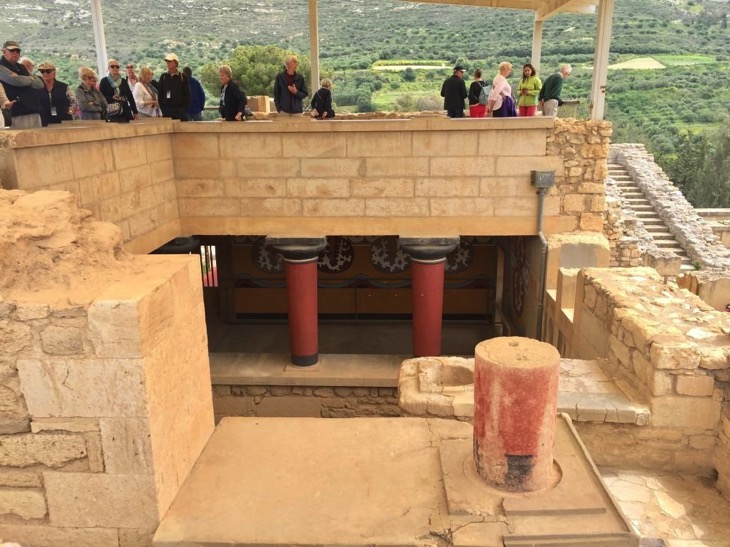
A Crete vacation is filled with many beautiful beaches, each with its own distinct personality. Choose from beaches with pink sands, including Falassarna, Elafonissi, Balos or Hersonissos. The island is popular for its rocky topography and magnificent gorges, the most famous of which is the Samaria Gorge. Hikers explore the natural treasures while taking in the stunning scenery and fauna along the way. The cuisine of Crete is known for its fresh ingredients and Mediterranean flavours. Traditional foods, including “moussaka”, “dakos”, and fresh seafood, are available at local tavernas. Don’t miss out on the island’s olive oil and cheese.
Crete has lovely cities and villages, each with its distinct personality. Chania and Rethymno offer charming historic towns and harbourfront restaurants. Crete’s capital is Heraklion, while smaller villages, such as Zaros and Loutro offer a more peaceful vibe. Water sports enthusiasts get involved in several activities, such as snorkelling, scuba diving, windsurfing, and sailing. Many beachfront resorts provide equipment rentals and lessons.
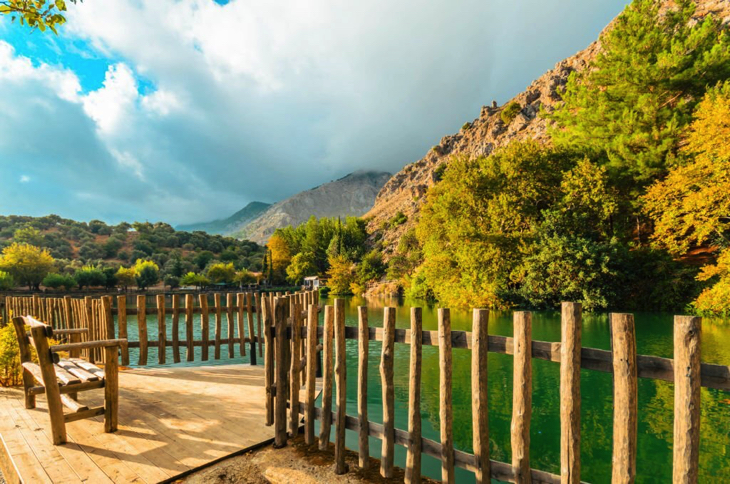
Numerous cultural celebrations and events happen in Crete, including religious holidays, music festivals, and harvest festivals. Cultural Events offer tourists a taste of Crete’s culture. Crete’s wine industry offers regional wine samples at local wineries. Olive oil tastings are popular due to Crete’s high-quality production.
Crete has natural beauties everywhere beyond its beaches and gorges, such as the cave of Dikteon Andron, where legend claims Zeus was born, and the exotic palm forest of Vai. There is a famous nightlife culture in locations, such as Hersonissos and Malia, with pubs, clubs, and beach parties for those looking to dance the night away. Visitors should read the things to do in Crete that tourists enjoy.
What can you Do in Cyprus?
Visitors can do a wide range of activities and events in Cyprus. Tourists visiting Cyprus island should learn about the fascinating past by visiting ancient archaeological sites, such as the Kourion Archaeological Site and the Tombs of the Kings. Cyprus’ coastline offers opportunities for leisure on pristine beaches, swimming in crystal blue waters, and participating in water sports activities like snorkelling and windsurfing. Hiking routes in the Troodos Mountains await nature lovers, while the Akamas Peninsula gives a glimpse of untouched natural beauty.

Local festivals and events bring the island’s colourful culture to life, allowing the opportunity to engage in Cypriot customs and arts. Traditional tavernas serve delectable Mediterranean cuisine, including a selection of “halloumi cheese” and “meze”. The warm and sunny environment of Cyprus makes outdoor activities and al fresco dining enjoyable throughout the year. The Island of Cyprus provides a well-rounded experience that blends history, nature, culture, and gastronomic pleasures, making it an adaptable destination for anyone with a wide range of interests.
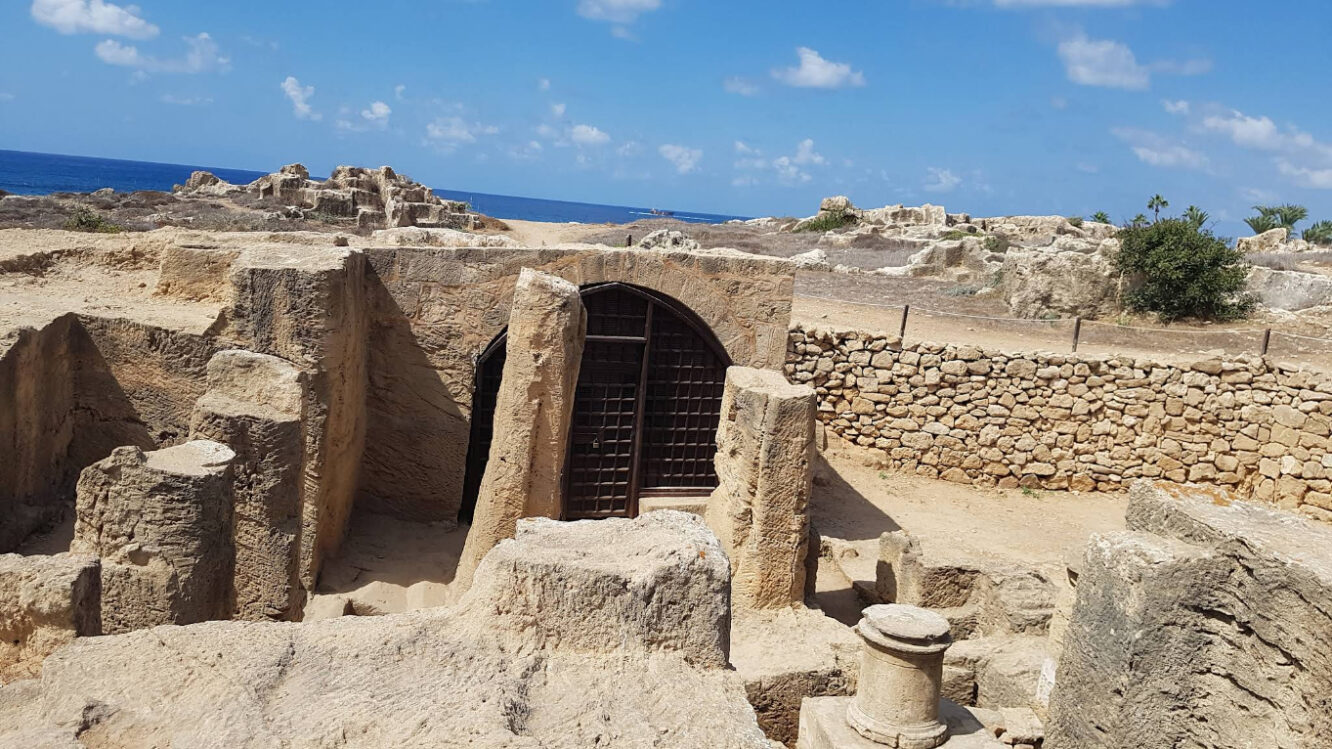
What is Cyprus Known for?
Cyprus is known for distinguishing qualities and characteristics that make it an enthralling location. Cyprus is most well-known for its Limassol carnival and Wreck diving (Zenobia wreck). It has an extensive history and archaeology, which includes numerous well-preserved ancient remains, including the Kourion Archaeological Site and the Tombs of the Kings at Paphos. The historical artefacts disclose details about Cyprus’s vast and varied history.
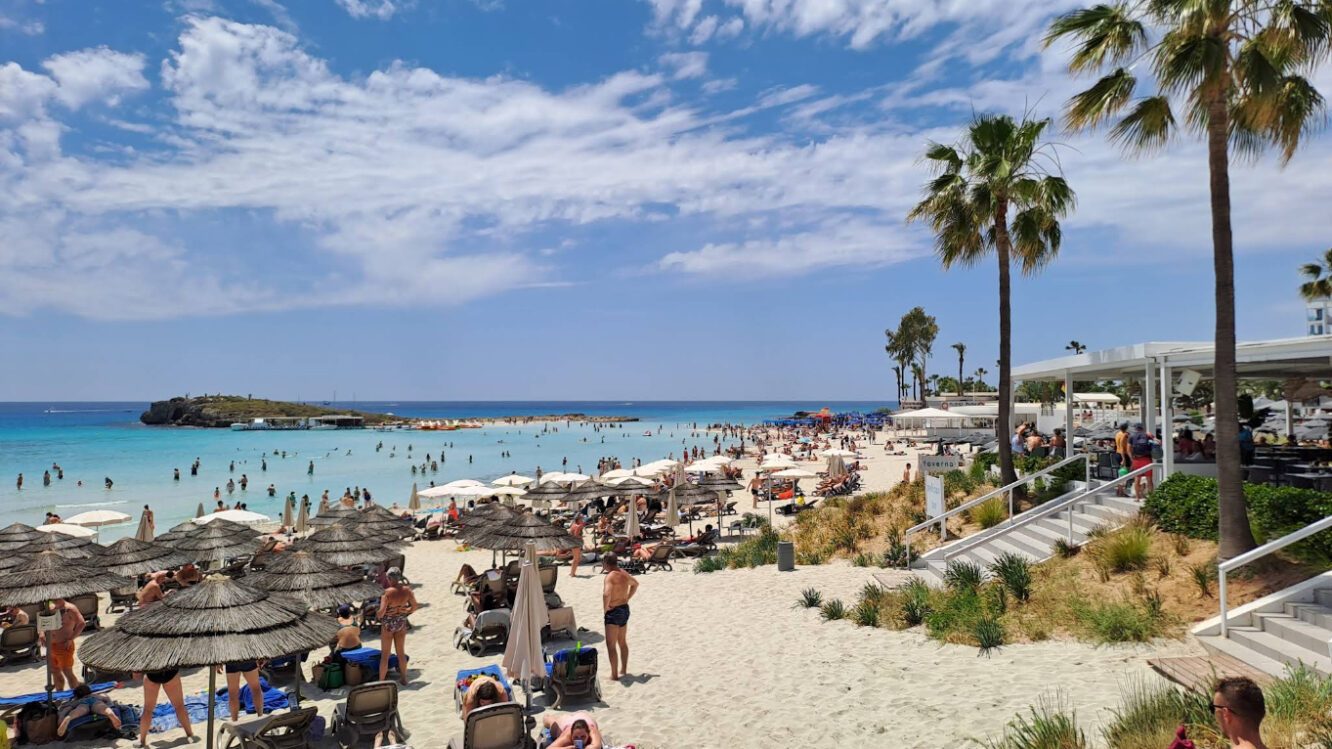
The island is popular too for its beautiful beaches, which include crystal-clear waters and golden sands. Iconic beach spots, such as Fig Tree Bay, Nissi Beach, and Coral Bay draw visitors from all over the world. The Mediterranean environment of Cyprus offers lots of sunny days, making it a perfect destination for beachgoers.
Cyprus is acclaimed for its exquisite food, which combines Mediterranean flavours with fresh, locally produced ingredients. Traditional Cypriot foods include halloumi cheese, souvlaki, moussaka, and meze entice foodies. Exploring the island’s culinary culture is a must-do on any visit. Hiking and discovering rich landscapes are available in the Troodos Mountains, while the Akamas Peninsula offers unspoiled natural splendour. The region is a sanctuary for nature lovers and outdoor enthusiasts. Cyprus has a rich culture, with Greek and Turkish influences, and a thriving arts sector and colourful festivals. It is recognised for its warm and welcoming hospitality, which makes guests feel at ease.
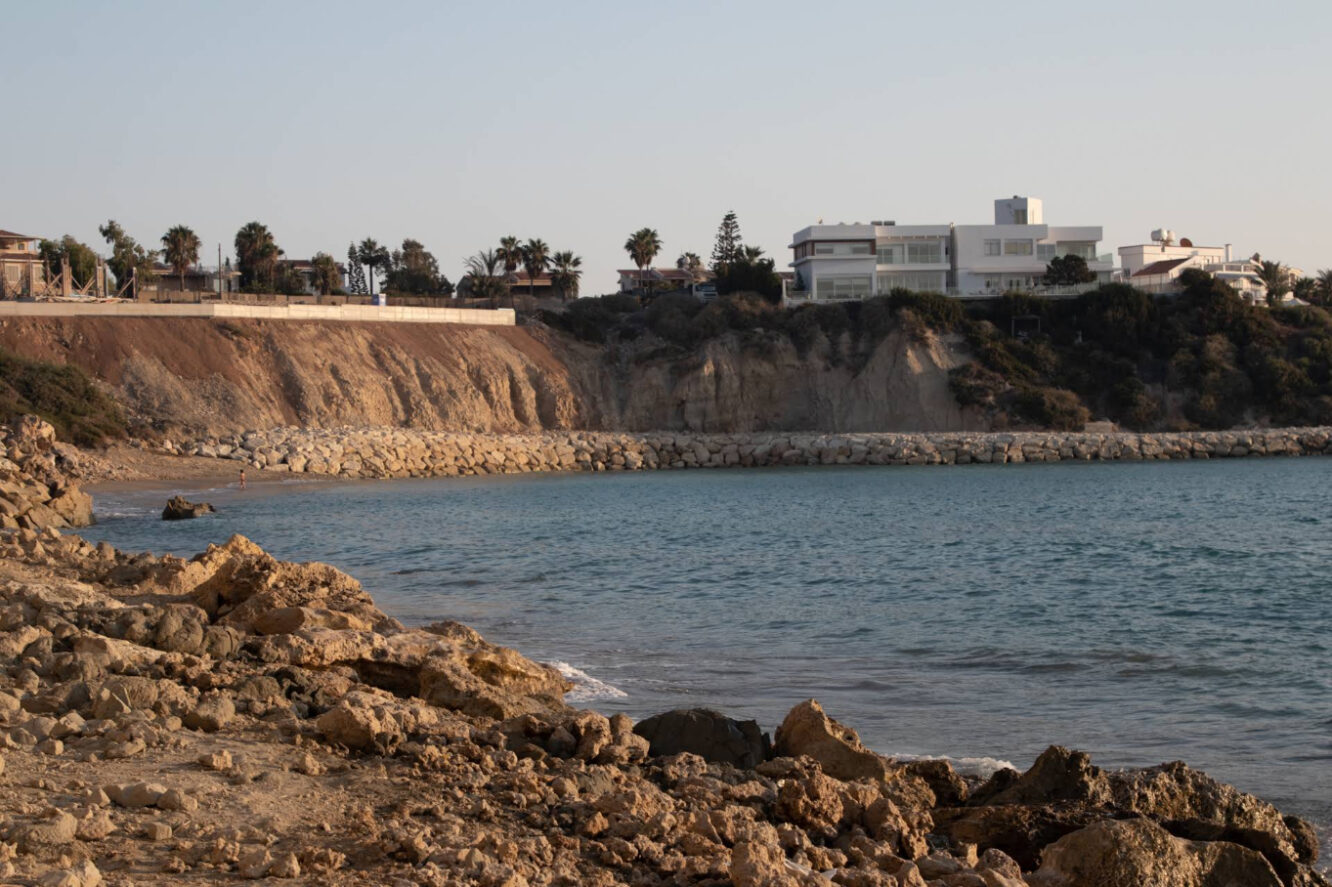
How to Get to Crete?
To get to Crete, there are ways to follow.
- Get a flight. Some people are asking where is Crete, and how to get there. Crete is accessible by flight from major Indian cities to Athens by carriers, such as Emirates, Qatar Airways, Etihad, Turkish carriers, Egypt Air, and Gulf Air, to Heraklion International Airport (Nikos Kazantzakis Airport – HER), Chania International Airport (Ioannis Daskalogiannis Airport – CHQ). Charter flights are available during the summer. Crete is similarly accessible via Italy, Germany, France, Sweden, Belgium, Cyprus, and the United Kingdom.
- Take a ferry ride. Take a ferry from Piraeus Port, which is close to Athens, to go by sea to visit Crete. There are numerous ports on Crete, including Heraklion, Chania, and Agia Marina. Take the ferry to the closest port of the hotel. Daily departures from Piraeus Port to Crete take approximately 9 to 10 hours. Crete is linked to neighbouring Greek islands, such as Santorini, Sikinos, and The Peloponnese. Avoid taking the ferry during the winter to be safe.
- Rent a car. Renting a car is an excellent alternative and visitors should plan accordingly and book a rental car before arriving to Crete. Several local car rental companies like Rental Center Crete and Justrentals offer all inclusive deals including full insurance at the most competitive prices.
- Ride public transportation. Tourists take a local bus or a taxi from the port to their destination. Taxis and buses are common modes of transportation, but taxis are more pricey. There are Hop-On Hop-Off Bus trips, which are ideal for seeing the most popular tourist attractions in the major cities.
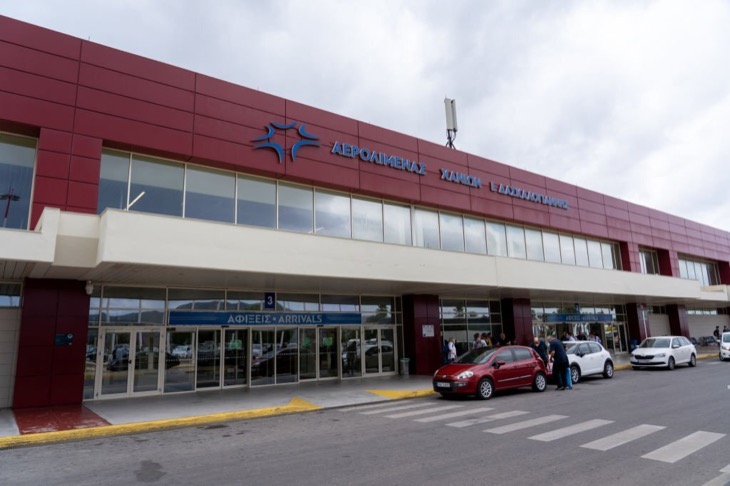
How to Get to Cyprus?
To get to Cyprus, there are ways to follow.
- Book a flight. Most people are asking where is Cyprus and how to get there. Cyprus is an island in the eastern Mediterranean Sea, therefore, getting there usually requires a flight. Find and schedule a flight to the Island of Cyprus. It is predominantly visited by short-stay European visitors, who frequently go by air as part of an all-inclusive package. Many flights depart from London and other European cities on both scheduled and charter routes throughout the year. Cyprus has two airports, Larnaca International Airport and Paphos International Airport, both of which are served by most European carriers.
- Ride a boat. Limassol Port serves as a port of entry for Mediterranean cruise ships. The harbour serves as a hub for shipping between Europe and Cyprus, with connections to the Greek islands of Rhodes and Crete, and the port of Piraeus (Athens). The crossing to Piraeus takes around 48 hours, and ticket rates vary according to season. There is a passenger ferry service between Cyprus and Israel, Lebanon, and Egypt. The majority of ferry services transport automobiles. Prices differ depending on the season.
- Get a travel package or deals. Cyprus is a favourite Mediterranean travel destination, with package costs ranging from one to two weeks, including hotel, airfare, and meals. The seasons change, with the peak season lasting from late June to late October. Tourists use many kinds of transport choices to reach their hotel, depending on their arrival airport and final location on the island, such as taxis, airport shuttle services, or car rentals.
How to get around Crete?
Getting around Crete is easy with various transportation options. Crete car rental is the easiest way to get around Crete. Major Cretan cities and airports host numerous car rental agencies like Rental Center Crete and Justrentals. Rural roads in Crete may be narrow and winding, necessitating cautious driving. KTEL public buses connect major cities and villages at a low cost but with inconvenient schedule.
Taxis provide convenient transport in urban areas, ideal for shorter trips; agreeing on fares before starting is advisable. Ferries connect Crete to other Greek islands and the mainland, with regular services from major ports like Heraklion and Chania to destinations such as Santorini and Athens.
Crete car rental prices vary but overall, renting a car is the most cost-effective way of getting around if you plan on spending a few days in Crete. It’s also convenient because you can travel at your own pace and you won’t have to wait for the bus or take taxis everywhere. A standard economy car can cost between 25 € ($27.12, £21.75) and 30 € ($32.54, £26.10) per day. Prices of a Crete car rental will vary depending on the type of car you get and how many days you’ll rent it for.
Crete is easier to get around using public transportation due to its extensive KTEL bus network that links major cities. Cyprus has a more modern road network, but limited bus services mean driving is often necessary. Both Crete and Cyprus require a rental car to explore remote or mountainous regions effectively.
How to get around Cyprus?
Cyprus transport relies on driving, with buses and taxis supporting public mobility. Intercity buses link major cities like Nicosia, Larnaca, Limassol, and Paphos. Urban and rural buses serve city zones and villages. Taxis operate with meters in the south and negotiated fares in the north. Cyprus has no train or metro system.
Airport buses connect towns directly to Larnaka and Pafos airports. Bus companies operate by region: NPT and LPT serve Nicosia and Larnaca, EMEL serves Limassol, OSYPA serves Paphos, and OSEA serves Famagusta. Bus fares cost 1.50 € ($1.60 , £1.30) per ride, 5 € ($5.40 , £4.30) per day, 15 € ($16.20 , £13.00) per week, and 40 € ($43.20 , £34.60) per month.
Intercity fares, such as Larnaka to Nicosia, cost around 4 € ($4.30 , £3.50). Taxis in South Cyprus use meters. Shared taxis carry up to eight people on fixed routes between cities. Taxis in North Cyprus require fare negotiation before departure. Bicycle rentals are available in tourist areas at about 15 € ($16.20 , £13.00) per day. Bike lanes exist in large towns and along coastal routes. Cyprus lacks train and underground transport systems.
What is driving in Crete like?
Driving in Crete involves navigating a mix of well-maintained highways, narrow mountain roads, and rural paths. Mountain routes include steep inclines and sharp turns, while livestock like goats may appear on less-traveled roads. Local drivers often drive assertively and use road shoulders to facilitate overtaking. Road signs appear in Greek and English but may be damaged or missing, making GPS essential.
Crete’s driving etiquette expects awareness and adaptability. Speed limits and seatbelt laws are strictly enforced. Hazards like falling rocks increase after rain. Compact cars work for cities and highways, but 4×4 vehicles are best for mountainous terrain. Crete Driving provides scenic freedom but demands caution and readiness for variable conditions.
Roads in Crete range from modern highways to narrow, winding mountain routes. Major roads are paved and well-maintained, but many rural and village roads are narrow, with sharp curves, steep inclines, and uneven surfaces. Hard shoulders are commonly used to let faster cars pass. Mountain areas often include unguarded edges and loose gravel.

Urban roads in Crete are generally smoother and easier to navigate, while rural roads may include dirt paths and unexpected livestock. Road signage appears in both Greek and English, though some signs may be damaged or missing. Navigation tools like GPS are essential when driving outside major towns.
Driving in Crete is generally easier than in Cyprus due to lower traffic congestion, simpler road layouts, and more relaxed local driving behavior. Crete has fewer urban areas and a less dense population, which reduces traffic stress. Cyprus roads are busier, especially in cities, and driving customs may be more aggressive.
Is driving in Cyprus easy?
Driving in Cyprus remains easy for left-hand drivers, especially UK visitors. Cyprus maintains a high road density compared to the EU average. Cyprus’ road network includes national, provincial, and rural roads. National roads connect major cities in a ring layout. Cyprus registered over 801,000 vehicles, including 550,000 passenger cars and 134,200 trucks, in 2025, according to European Traffic Police Network
Cypriots drive on the left and overtake on the right. Urban speed limits range from 50–65 km/h, open roads are 80 km/h, and motorways allow 100 km/h. The legal alcohol limit is 0.05%. Phone use requires hands-free devices, and eating or drinking while driving is banned. Road fatalities have declined from 48 in 2020 to 41 in 2024.
Local driving behavior includes tailgating and risky overtaking. Hazards like livestock, falling rocks, and roadside pedestrians are present. Parking in towns is difficult during peak tourist months.
Road signs follow EU standards and appear in Greek and English. UK drivers adapt quickly due to left-side traffic. Most visitors consider Cyprus safe and easy for driving.
Are there Tours From Crete to Cyprus?
No, there are no tours from Crete to Cyprus. Crete and Cyprus are separate islands, and travelling between them typically requires a combination of transportation options, including flights or ferry connections through mainland Greece or other neighbouring countries.
Travellers who are interested in visiting both Crete and Cyprus must book separate flights or ferry tickets from their respective departure points to their chosen destinations. Flights are generally more convenient for international travellers, while ferries are an option for tourists within Greece or nearby Mediterranean countries.
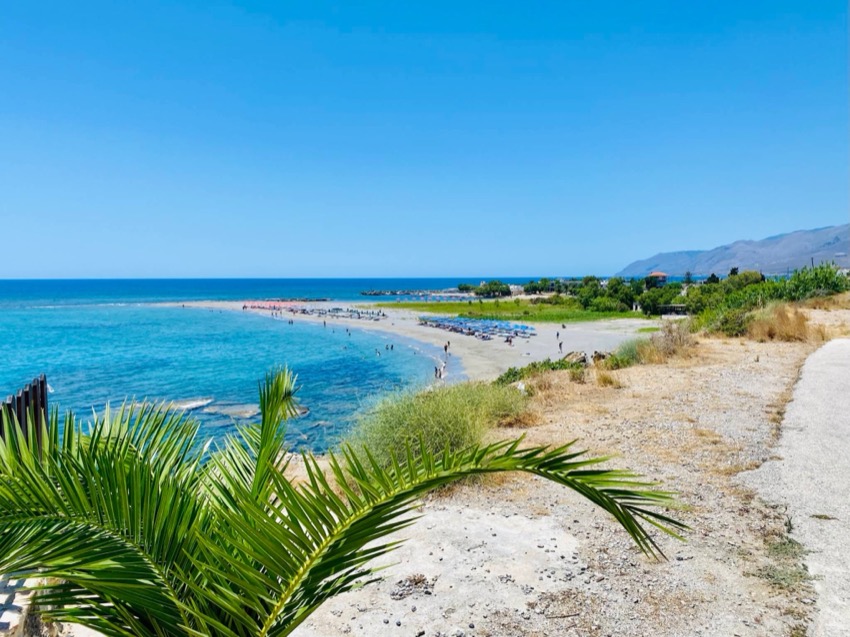
It’s important to note that travel logistics and routes change over time, and new transportation options become available. It is better to check with airlines, ferry companies, or travel agencies for the most up-to-date information on potential routes and transportation connections between Crete and Cyprus.
What are the Advantages of Crete Over Cyprus?
The advantages of Crete over Cyprus are listed below.
- Size and Variety: Crete is much larger than Cyprus and has a wider range of scenery and activities to explore. Crete offers gorgeous beaches and coastal locations, mountains, gorges, and a harsh interior. It enables a wide range of outdoor activities, including hiking, mountaineering, and beachcombing.
- Historical Importance: Crete is famous for its ancient Minoan civilisation, and archaeological monuments such as the Palace of Knossos provide a rich historical and cultural experience. The history of Cyprus is similarly extensive, but Crete’s Minoan past has a special allure.
- The Culinary Scene: Crete is well-known for its outstanding Mediterranean cuisine, which emphasises fresh and locally sourced ingredients. It offers a wide selection of traditional cuisine and is well known for its olive oil, cheese, and wine.
- Cultural Diversity: Crete’s varied landscape has resulted in the development of distinct regional cultures on the island. Each region has its own traditions, music, and cuisine, allowing visitors to explore a range of cultures within a single destination.
- Outdoor Recreation: The natural beauty of Crete, and its diverse topography, make it an outstanding choice for outdoor enthusiasts. Popular activities include hiking, trekking, and exploring the gorges and caves. The Samaria Gorge, for example, is one of Europe’s longest and most famous.
- Accessible: Crete has two international airports, making it accessible from a variety of European locations. The infrastructure and transit options on the island are well-developed, making it convenient for visitors.
- Less Congested: Crete is typically less busy than some parts of Cyprus, especially in the summer, despite being a vacation spot. It results in a more comfortable and pleasant trip.
What are the Advantages of Cyprus Over Crete?
The advantages of Cyprus over Crete are listed below.
- Larger Size: Republic of Cyprus is smaller and more compact than Crete, making it easier to explore in a shorter period. Travellers who seek a more concentrated experience benefit from it.
- Cultural and historical heritage: Cyprus has a rich history that has been impacted by civilizations, such as the Greeks, Romans, Byzantines, Venetians, Ottomans, and British. Its rich background is reflected in its architecture, traditions, and cultural events, making it an enthralling destination for history and culture buffs.
- Exceptional Architecture: Cyprus has charming villages with distinct traditional architecture, such as stone-built cottages and narrow streets. The lovely old towns of Lefkara and Omodos provide an insight into the island’s architectural heritage.
- Fortresses from the Middle Ages: Several well-preserved medieval castles, including Kyrenia Castle and Kolossi Castle, are found on the island. The old fortresses offer not simply a glimpse into the past, but breathtaking views of the surrounding landscape.
- Lovely coastline: Cyprus has stunning coastlines with pure blue waters and a variety of beaches, including sandy beaches and rocky coves. The magnificent seaside beauty of Famagusta, Ayia Napa, and Paphos is famous.
- Fauna and Flora: The Akamas Peninsula and the Troodos Mountains provide a one-of-a-kind opportunity to explore Cyprus’s natural splendour, including various flora and fauna. Hiking, birdwatching, and simply relaxing in the countryside are options for nature enthusiasts.
- Tourism in the Wine Industry: Cyprus has a thriving wine industry and a lengthy winemaking heritage. Visitors explore the island’s wine roads and visit small wineries to experience unique Cypriot wines.
- Divided Capital: The capital of Cyprus, Nicosia, is unusual in that it has two distinct parts, one of which is controlled by Cypriots and the other by Turks. The division gives the city’s history and culture an intriguing geopolitical dimension.
- Travel Comfort: Cyprus boasts well-kept roads and an efficient public transport system, making it easy for visitors to get around and experience the island.
What are the Best Places in Cyprus for a Honeymoon?
The best places in Cyprus for a honeymoon are listed below.
- Aphrodite’s Rock in Kouklia, Paphos: Aphrodite’s Rock, commonly known as Petra Tou Romiou, is a must-see on any couple’s trip to Cyprus. The massive rock formation is located on the island’s west shore. It is said to be the birthplace of Aphrodite, the ancient Greek goddess of love and beauty. The natural background and clear bodies of water are stunning, especially at sunrise when the air stays cool and the early sun casts a bronze glow over the gigantic ancient rock. Swimming is an option, however, bear in mind that the sea is turbulent at times.
- Relaxing Beaches: Discover the secluded beaches of Cyprus, such as Lara Bay, Pachyammos, and Alaminos Beach. Lara Bay is a 4×4-accessible sanctuary for wild goats, birds, and turtles. Pachyammos is a private beach ideal for couples, whilst Alaminos Beach is a secret paradise for sunseekers, complete with sun loungers and kiosks.
- St. Hilarion Castle in Kyrenia: The best-preserved castle in North Cyprus, St. Hilarion Castle, has stone walls, a decaying tower, and fractured stairways. It is accessible by taxi or rented automobile and offers panoramic views of the Turkish mainland on clear days.
- Wine Tasting in Villages: Explore wine-growing communities to learn about the old Cypriot wine business. Visit Vasilikon Winery in Paphos, Vouni Panayia in Lemona, and Tsangarides Winery in Paphos. Enjoy the views of the Mediterranean Sea, a small museum, and a café. Tsangarides Winery offers wines made from indigenous varieties and winemaking classes.
- Cape Greco in Ayia Napa: Explore Cape Greco is known for its unspoiled nature, beautiful waters, and breathtaking vistas of the Mediterranean. Enjoy the magnificent views and prominent walking trails. Take selfies at Kamara to Koraka and the lovely Ayii Anargyri Chapel, which are both accessible by vehicle and bicycle. Couples appreciate the beautiful natural bridge.
- Sunset Stroll and Cocktail Drinks in Larnaka: The coastline of Cyprus is romantic, particularly at sunset. A wonderful place for strolls in the early evening is Larnaka’s Finikoudes coastal promenade. Pass by the Byzantine Fort, the marina, the beach, the bars and restaurants, and people-watch. Relax while admiring the azure sea views.
How Big is Crete Compared to Cyprus?
The Republic of Cyprus is 29.27% smaller than Crete in land area. The Republic of Cyprus is 5,896 square kilometres (2,276.55 square miles), and Crete is 8,312 square kilometres (3,209 square miles). The Republic of Cyprus (the Greek Part) has a population of 875,000 people and Crete has 624,408 residents. Cyprus Republic has 40.141% more people than Crete.
Crete and Cyprus are accessible by air and water. Flying into their respective international airports from numerous European towns and beyond gets one to Crete and Cyprus. Ferry services connect both islands to the Greek mainland and other Mediterranean countries, providing an additional form of transportation, particularly for those with more time and a wish to explore the region’s maritime beauties.
International airports are available in both Crete and Cyprus. The two main airports of Crete are Heraklion International Airport (Nikos Kazantzakis Airport) and Chania International Airport (Ioannis Daskalogiannis Airport). Larnaca International Airport and Paphos International Airport are two major international airports in Cyprus.
How to Get to Cyprus if you are in Crete?
To get to Cyprus if you are in Crete, there are ways to follow.
- Fly via plane. Flying is the shortest way to get from Crete to Cyprus. Fly straight between Heraklion and Larnaca, or look for connections via Athens between Chania and Larnaca. Direct flights are available from Heraklion to Larnaca (1.5 hours) and from Chania to Paphos (1.5 hours). The trip to Larnaca from Sitia and Chania includes a stopover, usually in Athens.
- Travel via ferry. There are no direct ferries from Crete to Cyprus yet, but there are ferries from Crete to Athens. After the ferry ride, tourists take a take a flight from Athens to Cyprus.
How to Get to Crete if you are in Cyprus?
To get to Crete if you are in Cyprus, there are ways to follow.
- Book a flight. The cheapest month to fly via plane is October, and from Crete to Cyprus, it is via Heraklion to Larnaca. The average travel time is 1 hour and 19 minutes. Another option is to fly from Cyprus to Athens, Greece, depending on their location in Cyprus and the availability of flights. The flights from Athens to one of Crete’s two main airports, Heraklion International Airport “Nikos Kazantzakis” (HER) or Chania International Airport “Ioannis Daskalogiannis” (CHQ). The airports are located on Crete’s northern shore and are well-connected to every major Greek city.
- Ride a ferry. Consider taking a ferry from Piraeus, Athens’ main port, to Crete instead of flying from Cyprus to Athens. Several ferry companies like Minoan Lines, ANEK lines and Blue Star Ferries run trips between Piraeus and Crete, with arrival choices in Heraklion or Chania.
What is the expenses difference in Crete compared to Cyprus?
The difference in expenses between Crete and Cyprus is that Crete is 31% cheaper overall. Individuals spend 1,055 € ($1,150.00, £940.00)/month in Crete versus 1,380 € ($1,505.00, £1,230.00)/month in Cyprus. Families spend 2,595 € ($2,795.00, £2,280.00)/month in Crete and 3,330 € ($3,587.00, £2,930.00)/month in Cyprus. Crete offers lower housing, food, transport, and education costs, while Cyprus has higher salaries and quality-of-life metrics.
Crete apartments cost nearly half as much – 435 € ($476.00, £375.00)/month in city centers versus 855 € ($938.00, £740.00) in Cyprus. Restaurant meals cost 11.70 € ($12.80, £10.50) in Crete and 13.70 € ($15.00, £12.30) in Cyprus. Gasoline is more expensive in Crete (1.75 € ($1.95, £1.50)/liter vs 1.30 € ($1.45, £1.20)/liter), but utilities, childcare, and gym memberships remain cheaper. Cyprus offsets its higher costs with higher income, stronger purchasing power, and better public indicators.
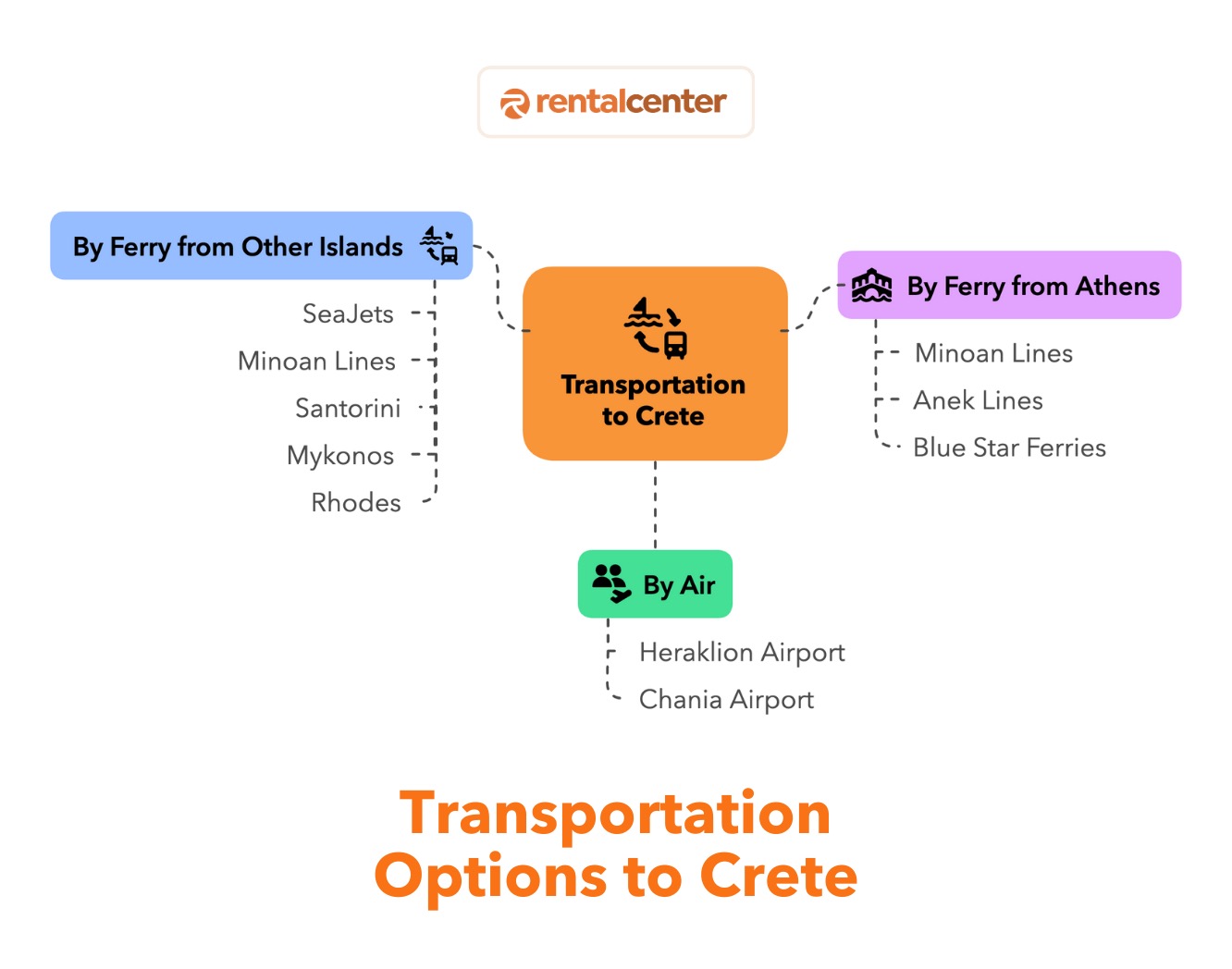
Crete costs 1,054 € ($1,150, £883,50)/month for individuals and 2,561 € ($2,795, £2,148,25)/month for families. Cyprus costs 1,380 € ($1,505, £1,156,75)/month for individuals and 3,290 € ($3,587, £2,758,25)/month for families, making it 31% more expensive. Crete apartments cost 436 € ($476, £366,00)/month in city centers and 331 € ($361, £277,50)/month outside. Cyprus apartments cost 860 € ($938, £720,50)/month in city centers and 686 € ($748, £548,50)/month outside. Crete properties cost 3,272 € ($3,570, £2,742,50)/m² in city centers and 2,521 € ($2,751, £2,100,75)/m² in suburbs. Cyprus properties cost 3,451 € ($3,486, £2,658,75)/m² in city centers and 2,742 € ($2,768, £2,107,00)/m² in suburbs.
Crete utilities cost 104 € ($114, £87,50)/month for individuals and 161 € ($176, £135,00)/month for families. Cyprus utilities cost 109 € ($120, £92,50)/month for individuals and 168 € ($185, £142,50)/month for families. Internet costs 29 € ($32,60, £25,15)/month in Crete and 28 € ($31,60, £24,40)/month in Cyprus. Milk costs 1,52 € ($1,68, £1,29) in Crete and 1,54 € ($1,70, £1,31) in Cyprus. Bread costs 1,20 € ($1,32, £1,01) in Crete and 1,56 € ($1,74, £1,33) in Cyprus. A restaurant meal costs 11,68 € ($12,80, £9,82) in Crete and 13,68 € ($15,00, £11,50) in Cyprus. A mid-range dinner for two costs 44,40 € ($48,70, £37,35) in Crete and 56,65 € ($62,10, £47,65) in Cyprus.
Crete transport tickets cost 1,32 € ($1,45, £1,11) and monthly passes 48,90 € ($53,70, £41,15). Cyprus tickets cost 1,98 € ($2,18, £1,67) and monthly passes 41,80 € ($46,00, £35,25). Crete gasoline costs 1,77 € ($1,95, £1,49)/liter. Cyprus gasoline costs 1,32 € ($1,45, £1,11)/liter. Crete gym memberships cost 43,95 € ($48,40, £37,10)/month and cinema tickets 7,55 € ($8,32, £6,38). Cyprus gym memberships cost 58,15 € ($64,10, £49,10)/month and cinema tickets 9,45 € ($10,40, £7,98).
Crete kindergartens cost 348 € ($386, £295,00)/month and international schools 4,170 € ($4,629, £3,550,00)/year. Cyprus kindergartens cost 400 € ($444, £340,00)/month and international schools 6,760 € ($7,505, £5,755,00)/year. Cyprus salaries average 1,585 € ($1,759, £1,348,25)/month and Crete salaries average 898 € ($997, £764,75)/month. Cyprus has stronger purchasing power.
Cyprus scores 8.25 on the human freedom index, 81,9 years in life expectancy, 75,1% English fluency, and 79 on the quality of life index. Crete scores 7.58 on freedom, 80,6 years in life expectancy, 51% English fluency, and 68 on quality of life.
Are there Buses in Cyprus?
Yes, there are buses in Cyprus and they are the sole public transport there. Cyprus has an extensive bus system that services both urban and intercity routes. Local bus services provide a quick and cost-effective way to get around town in cities such as Nicosia, Limassol, Larnaca, and Paphos. The buses are run by various firms and are usually reliable, making them an appealing option for both residents and tourists.
There are long-distance buses that connect major cities and towns within Cyprus, providing a cost-effective opportunity to visit different regions of the island. The intercity bus network is broad and comfortable in general, with air-conditioned coaches serving popular destinations. There are shuttle services and airport transfer buses in Cyprus that connect the major airports on the island, including Larnaca International Airport and Paphos International Airport, to numerous cities and resorts.
Does Cyprus have Markets?
Yes, Cyprus has a vibrant market culture with open-air and indoor markets operating across all major cities. Nicosia, Larnaca, Limassol, Paphos, and Northern Cyprus each host regular markets offering fresh produce, local goods, clothing, and handmade items. Most markets open early in the morning and close by mid-afternoon.
Traditional markets, known as “souks” or “bazaars”, are found within Cyprus in various cities and towns. Traditional markets retailing of a diverse range of goods, such as fresh vegetables, spices, local handicrafts, textiles, jewellery, and souvenirs.
Cyprus markets, similar to Heraklion markets, are hosted in every city. Cyprus is very famous for its weekly farmers’ markets, where visitors buy fresh fruits, vegetables, cheese, and other locally produced goods directly from farmers and producers.
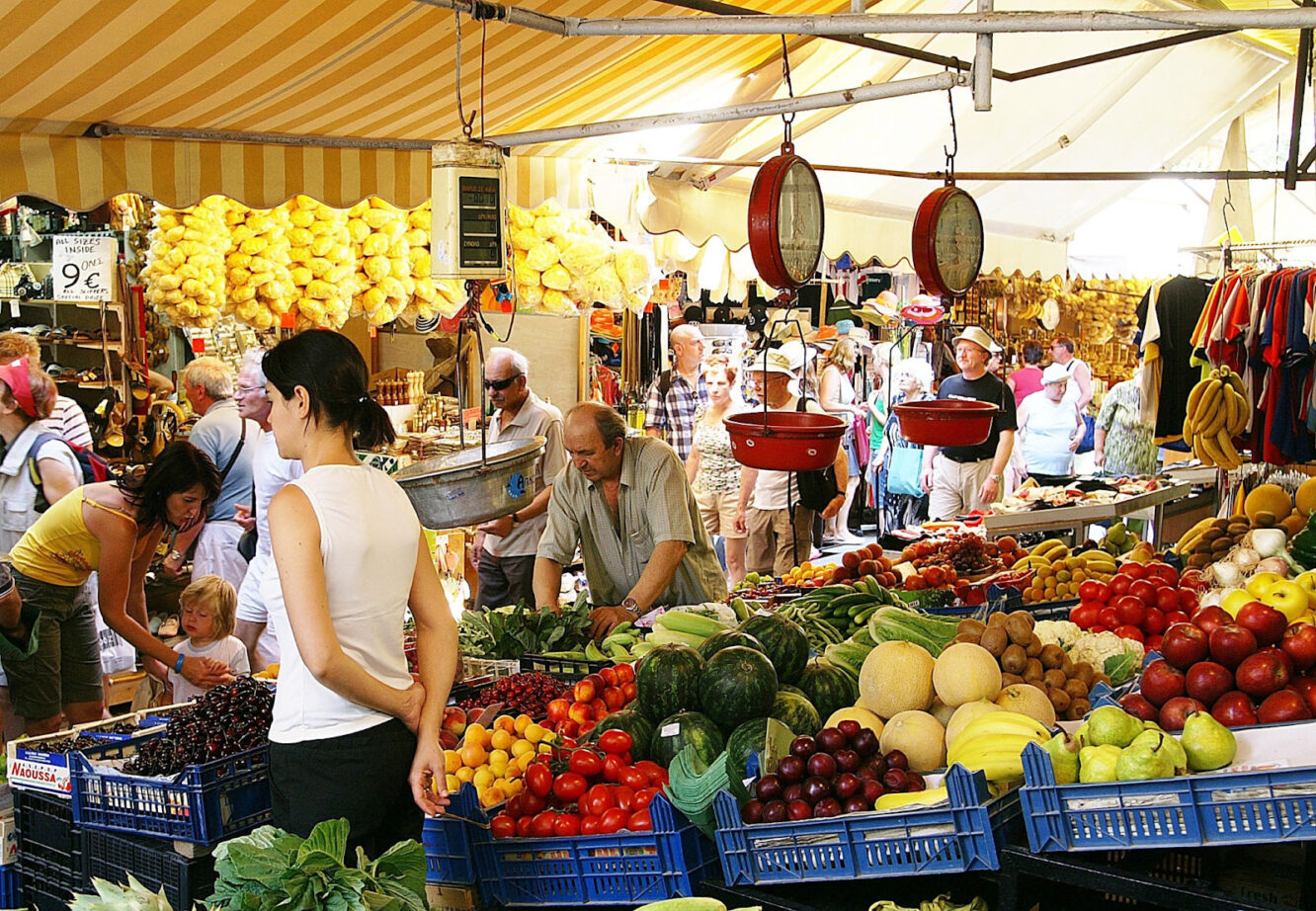
Nicosia Open Market and OXI Veggie Market operate on Wednesdays and Saturdays from early morning until late afternoon. Fork Food Market remains available in central Nicosia.
Larnaca Municipal Market runs Monday to Saturday with seasonal hour changes, and hosts a Saturday farmer’s market in the morning.
Finikoudes Market opens on weekends near the promenade.
Limassol holds daily and weekend markets for fruits, vegetables, and secondhand goods, including the Asomatos Flea Market on holidays.
Paphos runs an indoor market in the town center and a Sunday open-air market in Timi village.
Shops in Cyprus follow seasonal hours, closing earlier on Wednesdays and possibly for siesta during summer. Retail hours extend in evenings before Christmas and Easter.
Is Cyprus in Greece?
No, Cyprus is not in Greece, but an island nation in the eastern Mediterranean Sea. Cyprus is a sovereign nation-state with its own government, culture, and identity. It is a unique governmental state with ancient and cultural ties to Greece. It has an extensive Greek-speaking population. Cyprus has been officially divided since 1974, with a buffer zone maintained by UN peacekeeping forces separating the Republic of Cyprus’ two-thirds of the island in the south from the Turkish Cypriot one-third in the north.
The Republic of Cyprus acquired independence on August 16, 1960, and became a member of the United Nations one month later. Efforts to unify the island under a federal system are underway, due to the influence of the United Nations and the European Union. The European Union’s southernmost point is the Republic of Cyprus, which has been a member since 2004.
Is Crete Part of Greece?
Yes, Crete is part of Greece. Crete is the most populated and largest of the Greek islands, and it is an integral component of the country. Crete has a rich history that dates back thousands of years, with substantial contributions to ancient Greek civilisation, especially the Minoan civilization, which is recognised as one of Europe’s earliest civilised societies.
The “Region of Crete”, or Perifereia Kritis in Greek, is one of Greece’s 13 administrative regions. It has its municipal administration but is ultimately subordinate to the Greek state. The island is renowned for its own culture, traditions, and languages. It is a major tourist destination, drawing tourists from around the world to discover its stunning landscapes, historical landmarks, and dynamic culture. Crete’s ties to Greece are strongly ingrained in its history, geography, and identity as an integral part of the Hellenic Republic.
Published on April 1, 2025















